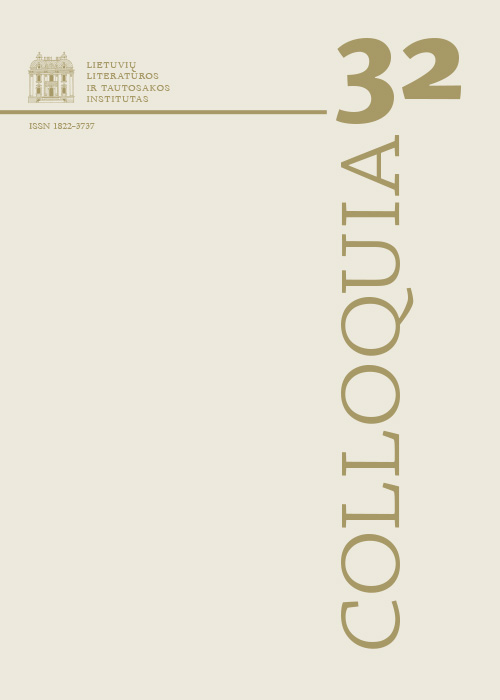“Exactly who, or what, is the narrator of Ričardas Gavelis’ Vilniaus džiazas?”
Abstract
This article examines the expression and existence of the narrator in Ričardas Gavelis’ (1950–2002) novel Vilniaus džiazas (Vilnius Jazz, 1993). Paraphrasing J. Hillis Miller’s famous question (“Exactly who, or what, is the narrator of [Virginia Woolf’s] To the Lighthouse?”), the author describes and analyzes Gavelis’ narrator’s trajectories; she demonstrates the ways this narrator is similar to, but also surpasses the narrator of Woolf’s novel, resisting all forms of identification and becoming the most complex element in Gavelis’ work.
Each part of Gavelis’ novel demonstrates new potential for expression and action on the part of the narrator: In “Meditacijos” (Meditations) the narrator amalgamates the autonomous consciousness of each different character; “Bakneriada” is narrated by a traditional omniscient narrator, who, although completely dominated by Bakner (the hero of that part of the novel), at first glimpse appears to rule over the final section, “Didžioji Bendrija” (The Great Community). Reading more closely, however, it become clear that this latter narrator, who consistently speaks in the third person, is also the inner voice of all of the characters – a counter-balance to the depths of each one’s stream-of-consciousness, and also a connector between them.
In her attempt to identify the multiple layers of the narrator of Vilniaus džiazas, the author of the article draws not only on Hillis Miller’s abstract concept of the “narrator as collective consciousness”, but also looks back at the theory of inner lives that is so prominent in Gavelis’ oeuvre, and asks if, in this novel, it functions the same way as it did in, for example, the story Galbūt (Perhaps, 1982), or whether it has been transformed. She arrives at the conclusion that the theory of internal inhabitants works somewhat differently in Vilniaus džiazas compared to earlier works, generating possibilities for meaning and expression within the text. To understand the ways that the characters’ consciousnesses are connected, the author borrows Hillis Miller’s metaphor of “the figure in the carpet”, which becomes an unexpected tool for recognizing the unreliable narrator; it bears witness to the deconstructed nature of the narrator and the characters as well as the existence of a multi-layered “I” in the text.
Downloads
Most read articles in this journal
- Aistė Kučinskienė, Jūratė Sprindytė, Virginija Cibarauskė, Jūratė Čerškutė, Rima Bertašavičiūtė, Apie doktorantūros studijas, laisvalaikį ir akademines erdves , Colloquia: Vol. 33 (2014)




